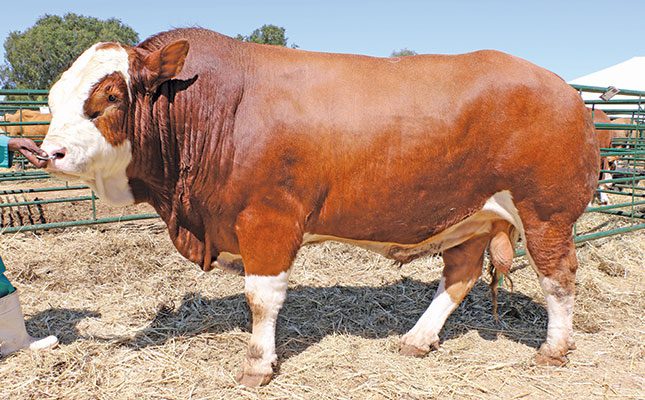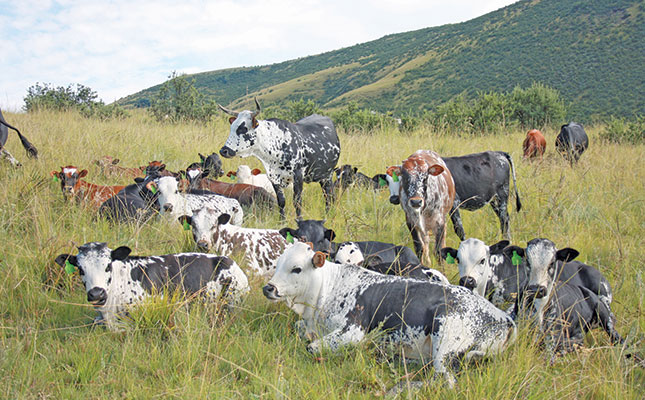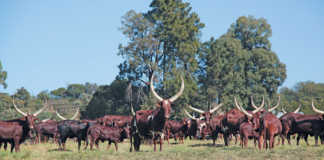
Photo: FW Archive
Namibia is the driest country in sub-Saharan Africa, thus its agriculture sector relies largely on groundwater. Despite the high temperatures and the scarcity of water, Namibian farmers have been raising beef cattle successfully for many decades.
As of November 2020, around 70% of the country’s population rely directly or indirectly on agriculture for their incomes, and this industry is also one of Namibia’s biggest employers.
Excluding fishing, agriculture’s contribution to Namibia’s GDP averaged 4% over the past five years; in 2019, it’s contribution to GDP was 6,6%. Meat processing comprises 0,2% to 0,4 % of GDP.
According to Deutsche Gesellschaft für Internationale Zusammenarbeit GmbH, livestock farming contributes around 66% to agricultural production in Namibia, and livestock production (particularly that of beef) is largely export-driven (see table).
South Africa is Namibia’s largest import partner, and food products account for most of these imports. Other critical import partners include the Netherlands, Germany, Russia and Morocco. In 2019, Namibia exported around 12 400t of meat, mostly to the US, Europe, South Africa and China.
Commercial farming and subsistence farming dominate the country’s agriculture sector.
The commercial sector is run on more than 44% of land, while subsistence farming is run on 41% thereof.
Livestock
Cattle are mostly produced in the northern and central parts of Namibia, while sheep production is mainly concentrated in the southern area of the country. The most popular beef cattle breeds in Namibia are Brahman, Bonsmara, Simmentaler and Simbra.
Beef production in the commercial sector can be divided into two production systems: ox production and weaner production, the latter of which is currently the bigger of the two. Weaners are sold at auctions and exported live to feedlots in South Africa, while oxen are slaughtered at different ages.
Over the years, weaner production has become more popular than oxen production. This is largely due to the increase in feed prices, which makes it relatively cheaper to produce weaners.
Consistently exceptional
Despite the difficult farming conditions, commercial farmers have managed to consistently produce exceptional cattle and meat. One of the reasons for this is the Namibia Agricultural Union’s development of the Production Cost Index, which helps farmers keep track of profitability.
“The index is based on a basket of products for each farming-expense category. A weighting is allocated to each category based on its size relative to the total farming expenses of the average livestock farming enterprise in Namibia. The same is done for income, which is primarily based on the relative price of sheep and cattle over time.
“The relative cattle price consists of an appropriately weighted (in terms of marketing volumes) combination of the average weaner and average carcass price.
“After appropriately weighing the expenses and income, these are indexed from a specific base year. This allows for an effective comparison of changes from the base year onwards.
Therefore, by using this Production Cost Index, the cost-price squeeze phenomenon can be quantified and monitored over time,” Farmer’s Weekly reported in January 2016.
Other reasons for Namibia’s success in beef production is the fact that the country is sparsely populated, and has large areas of pastureland. Land remains fairly affordable and labour costs are comparatively low. This means it is cheaper for farmers to produce meat in Namibia than in many other countries.
Challenges to the livestock sector
Despite the benefits to farming livestock in Namibia, producers there have recently experienced a decline in profitability, largely due to high input costs. Moreover, bush encroachment and the degradation of pastureland remain threats to profitable and sustainable beef production in the country.
Climate change and an increase in seasonal droughts, the latter resulting in a reduction in natural grazing, are also concerns for the long-term sustainability of the industry.
As land and fodder are essential to profitable beef production, according to a study by the US Department of Agriculture, meat-industry stakeholders are concerned about the threats being posed to Namibian farmers’ ability to feed their animals.
Another threat to the industry is the breakage and lack of maintenance of the veterinary cordon fence (VCF), which is particularly prone to breakage by large mammals, such as elephants.
The VCF is aimed at inhibiting the movement of cattle between the northern and southern parts of the country. By doing so, the Namibian government hopes to better control the spread of diseases such as foot-and-mouth disease (FMD). As seen in South Africa, FMD would likely lead to a ban or limitation of exports from Namibia.
Communal farmers face similar challenges, as well as the issue of limited access to market and better-quality breeding animals.










